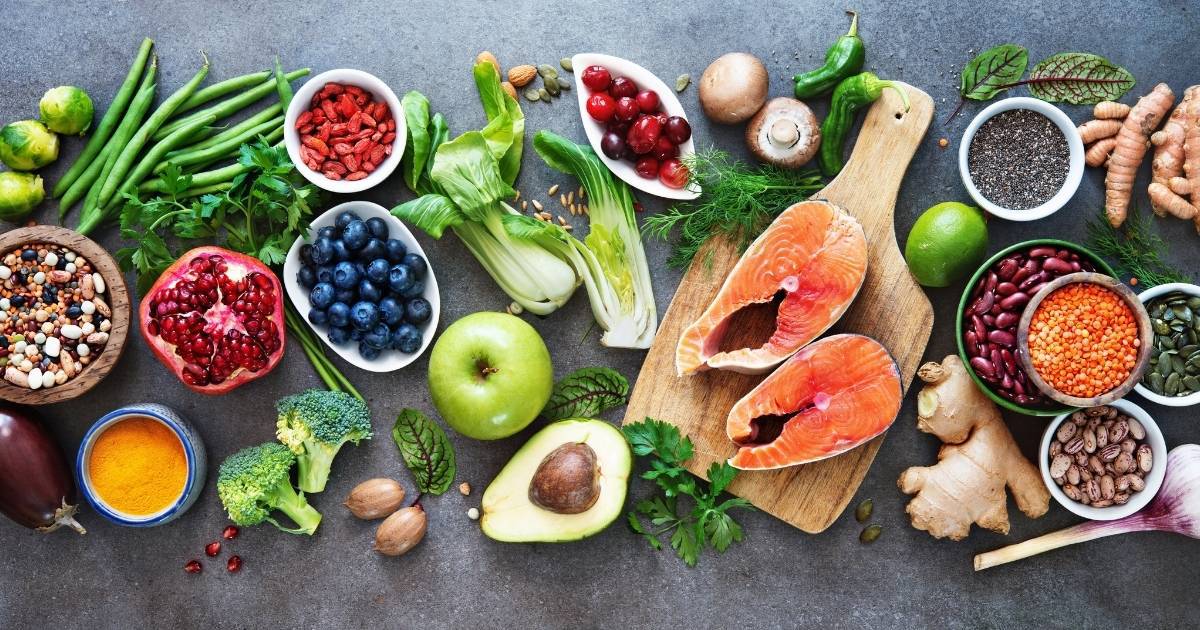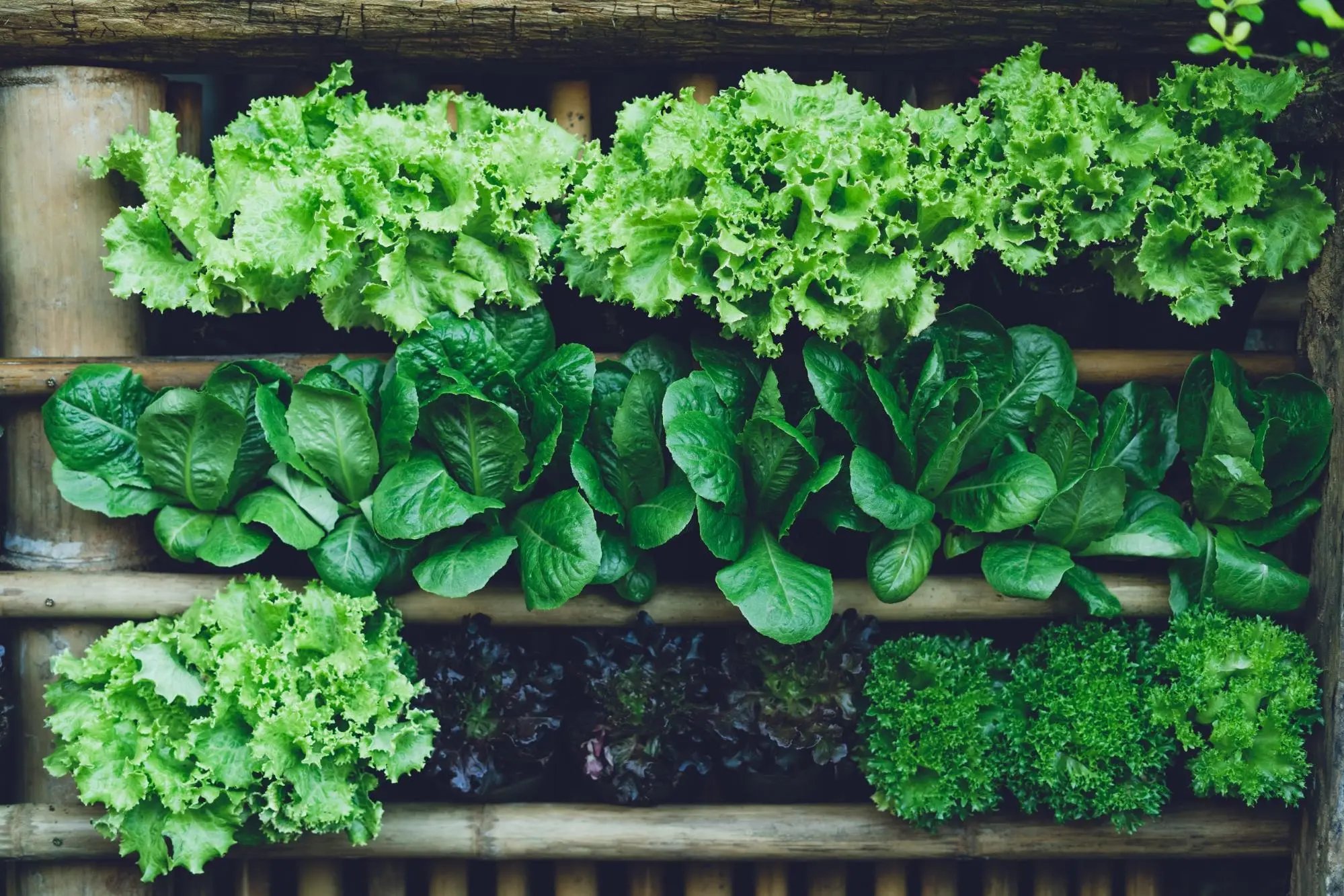Home>Gardening News and Trends>Latest News>What Vegetables Can Lower Blood Sugar


Latest News
What Vegetables Can Lower Blood Sugar
Modified: January 22, 2024
Discover the latest news on how certain vegetables can naturally lower blood sugar levels. Explore the benefits of incorporating these veggies into your diet for better health and well-being.
(Many of the links in this article redirect to a specific reviewed product. Your purchase of these products through affiliate links helps to generate commission for Chicagolandgardening.com, at no extra cost. Learn more)
Table of Contents
Introduction
When it comes to managing blood sugar levels, incorporating a healthy and balanced diet is crucial. While there are various factors that can influence blood sugar levels, such as physical activity and medication, the role of nutrition cannot be overlooked. One type of food that has been extensively studied for its potential to lower blood sugar levels is vegetables.
Vegetables are packed with essential nutrients, vitamins, and minerals that promote overall health. They are also low in calories and high in fiber, making them an excellent choice for individuals looking to regulate their blood sugar levels and maintain a healthy weight.
In this article, we will explore the different types of vegetables that have shown promise in lowering blood sugar levels. From leafy greens to root vegetables, these natural powerhouses can be incorporated into your meals to support optimal blood sugar management.
It is important to note that while vegetables can have a positive impact on blood sugar levels, it is always advisable to consult with a healthcare professional or a registered dietitian before making any significant changes to your diet, especially if you have a medical condition or are taking medication.
So, without further ado, let’s dive into the world of vegetables and discover how they can contribute to better blood sugar control.
Understanding Blood Sugar Levels
Before we delve into the role of vegetables in lowering blood sugar levels, it’s important to have a basic understanding of what blood sugar is and why its regulation is essential for our health.
Blood sugar, also known as blood glucose, refers to the amount of glucose present in our bloodstream. Glucose is a type of sugar that comes from the foods we eat and provides energy to our cells. However, in order for glucose to enter our cells and be used as fuel, it needs to be properly regulated.
The hormone responsible for regulating blood sugar levels is insulin, which is produced by the pancreas. When we eat a meal, especially one that contains carbohydrates, our blood glucose levels rise. In response, the pancreas releases insulin, which allows glucose to enter our cells, thus lowering blood sugar levels.
However, in individuals with conditions like diabetes, the body either does not produce enough insulin or does not use it effectively. As a result, blood sugar levels can become elevated and pose potential health risks. High blood sugar levels over time can lead to complications such as cardiovascular disease, nerve damage, and kidney problems.
Monitoring and controlling blood sugar levels is crucial for overall health and well-being. This is where the role of diet, including the consumption of vegetables, comes into play.
By incorporating the right types of foods into our diet, we can help stabilize blood sugar levels and reduce the risk of complications. Vegetables, in particular, offer a wide array of health benefits and can play a vital role in maintaining optimal blood sugar control.
The Role of Vegetables in Lowering Blood Sugar
Vegetables are an essential part of a balanced diet and can have a significant impact on blood sugar levels. They are rich in fiber, vitamins, minerals, and antioxidants, all of which contribute to better blood sugar control.
One key factor in managing blood sugar levels is the glycemic index (GI) of a food. The GI measures how quickly a particular food raises blood sugar levels. Foods with a high GI are quickly digested and cause a rapid spike in blood sugar, while foods with a low GI are digested more slowly, resulting in a gradual rise in blood sugar.
Most vegetables have a low GI, which means they have a minimal impact on blood sugar levels. This is due to their high fiber content, as fiber slows down the digestion and absorption of carbohydrates.
Furthermore, vegetables contain complex carbohydrates rather than simple sugars. Complex carbohydrates take longer to break down and are released into the bloodstream at a slower rate, preventing sudden spikes in blood sugar.
Additionally, the soluble fiber found in vegetables forms a gel-like substance in the digestive system, which can help regulate blood sugar levels. This gel-like substance slows down the absorption of sugars, preventing rapid fluctuations in blood sugar.
Incorporating a variety of vegetables in your diet can also help improve insulin sensitivity. Insulin sensitivity refers to how efficiently our cells respond to insulin and take up glucose from the bloodstream. By improving insulin sensitivity, vegetables can aid in better blood sugar regulation and reduce the risk of insulin resistance, which is commonly associated with conditions like type 2 diabetes.
Moreover, vegetables are typically low in calories and can be a valuable addition to a weight management plan. Maintaining a healthy weight is crucial for blood sugar control, as excess body weight can lead to insulin resistance and elevated blood sugar levels.
By filling up on nutrient-dense vegetables, you can feel satisfied without consuming excess calories, making it easier to achieve and maintain a healthy weight.
Now that we understand the role of vegetables in lowering blood sugar levels, let’s explore some specific types of vegetables that have shown particular promise in this regard.
Leafy Green Vegetables
Leafy green vegetables are a powerhouse when it comes to promoting optimal blood sugar control. They are low in calories, high in fiber, and packed with essential vitamins and minerals.
One standout nutrient in leafy greens is magnesium. Studies have shown that individuals with higher magnesium intake have better insulin sensitivity and lower risk of type 2 diabetes. Leafy green vegetables such as spinach, kale, and Swiss chard are excellent sources of magnesium.
The high fiber content in leafy greens also contributes to better blood sugar management. Fiber slows down the digestion and absorption of carbohydrates, preventing rapid spikes in blood sugar levels. This can help regulate blood sugar and reduce the risk of insulin resistance.
Furthermore, leafy greens are rich in antioxidants. These compounds help reduce inflammation and oxidative stress in the body, which are key factors in the development of diabetes and its complications.
One study conducted by the Harvard School of Public Health found that increased consumption of leafy greens was associated with a significantly reduced risk of developing type 2 diabetes. Therefore, incorporating leafy greens into your diet can have a positive impact on blood sugar control and overall health.
There are numerous ways to enjoy leafy greens in your meals. Add them to salads, sandwiches, smoothies, or sauté them as a side dish. Get creative with your recipes to ensure you are getting a variety of leafy green vegetables in your diet.
Examples of leafy green vegetables include spinach, kale, collard greens, Swiss chard, and romaine lettuce. Aim to include a serving of leafy greens in your daily meals to reap their blood sugar-lowering benefits.
Cruciferous Vegetables
Cruciferous vegetables belong to the Brassicaceae family and are known for their unique and distinct flavors. These vegetables include broccoli, cauliflower, cabbage, Brussels sprouts, and kale, among others.
Cruciferous vegetables offer a wide range of health benefits, including their potential to help lower blood sugar levels. These vegetables are low in calories, high in fiber, and packed with nutrients that support optimal blood sugar control.
One key component found in cruciferous vegetables is sulforaphane. Sulforaphane has been studied for its anti-inflammatory and antioxidant properties, which may contribute to better blood sugar regulation and reduce the risk of diabetes and its complications.
Studies have shown that sulforaphane can help improve insulin sensitivity, enhance glucose tolerance, and lower fasting blood sugar levels. This compound may also have a protective effect on pancreatic cells, which are responsible for producing insulin.
The high fiber content in cruciferous vegetables also plays a role in blood sugar management. Fiber slows down carbohydrate digestion and absorption, resulting in more controlled blood sugar levels. This can help prevent sudden spikes in blood sugar and promote more stable energy levels throughout the day.
Incorporating cruciferous vegetables into your meals is easy and versatile. You can enjoy them raw, steamed, sautéed, or roasted. Add them to stir-fries, soups, or salads for a nutrient-packed meal.
Examples of cruciferous vegetables include broccoli, cauliflower, Brussels sprouts, cabbage, and kale. Including these vegetables in your diet can be a tasty and effective way to support better blood sugar control.
Root Vegetables
Root vegetables are a nutritious and flavorful addition to any diet. These vegetables include carrots, sweet potatoes, beets, turnips, and parsnips, among others. They are not only delicious but also offer several benefits when it comes to lowering blood sugar levels.
Root vegetables are high in fiber, which is essential for maintaining stable blood sugar levels. The fiber content in these vegetables slows down the digestion process, preventing rapid spikes in blood sugar. This slow and controlled release of glucose into the bloodstream can help regulate blood sugar levels and prevent sudden fluctuations.
Furthermore, root vegetables are rich in antioxidants, vitamins, and minerals. These nutrients can help reduce inflammation and oxidative stress, which are associated with insulin resistance and diabetes.
One standout root vegetable for blood sugar management is the sweet potato. Sweet potatoes have a lower glycemic index compared to regular potatoes, meaning they have a less significant impact on blood sugar levels. They are also high in fiber and contain beneficial compounds such as anthocyanins and beta-carotene.
Carrots, another root vegetable, are known for their high content of beta-carotene. Beta-carotene has been linked to improved insulin sensitivity and lower blood sugar levels. Moreover, carrots are low in calories and can be a satisfying and nutritious snack option.
When incorporating root vegetables into your meals, opt for cooking methods that retain their nutrients and minimize added fats. Roasting, steaming, or boiling are excellent choices. Avoid frying or preparing them with high-fat sauces or dressings, as this can negate their potential benefits for blood sugar control.
Remember, moderation is key, as root vegetables still contain carbohydrates. It’s important to consider portion sizes and the overall balance of your meals.
By incorporating a variety of root vegetables into your diet, you can enjoy their delicious flavors while also reaping their blood sugar-lowering benefits.
Non-Starchy Vegetables
Non-starchy vegetables are an excellent choice for individuals looking to manage their blood sugar levels. These vegetables are low in carbohydrates and calories, which makes them ideal for supporting blood sugar control.
Non-starchy vegetables include a wide variety of options such as leafy greens, cucumbers, bell peppers, zucchini, asparagus, and mushrooms, among others. They are high in fiber, vitamins, minerals, and antioxidants, making them a nutrient-dense addition to any meal.
Due to their low carbohydrate content, non-starchy vegetables have a minimal impact on blood sugar levels. They provide important nutrients without significantly raising blood glucose, making them an excellent choice for individuals with diabetes or those looking to maintain stable blood sugar levels.
These vegetables are also high in water content, which adds volume to your meals without adding many calories. This can help you feel full and satisfied without compromising your blood sugar control or weight management goals.
Furthermore, non-starchy vegetables are rich in fiber, which helps slow down the absorption of glucose in the bloodstream. This gradual release of glucose prevents sudden spikes in blood sugar and promotes a more stable energy level throughout the day.
There are numerous delicious and creative ways to incorporate non-starchy vegetables into your meals. You can enjoy them raw in salads, roasted as a side dish, or sautéed in stir-fries. You can also blend them into soups or add them to omelets for an extra dose of nutrients.
Some examples of non-starchy vegetables include spinach, bell peppers, broccoli, cauliflower, green beans, and tomatoes. Aim to fill half of your plate with non-starchy vegetables to maximize their health benefits and support blood sugar regulation.
By embracing non-starchy vegetables as a cornerstone of your diet, you can enjoy a delicious variety of flavors while promoting optimal blood sugar control and overall health.
Tomatoes
Tomatoes are not only a versatile and delicious addition to meals but also offer several benefits when it comes to lowering blood sugar levels.
Tomatoes are low in calories and carbohydrates, making them a suitable choice for individuals managing their blood sugar levels. They have a low glycemic index, which means they have a minimal impact on blood sugar levels.
The rich antioxidant content in tomatoes, particularly lycopene, has been associated with improved blood sugar control. Lycopene has been shown to enhance insulin sensitivity and reduce inflammation, both of which contribute to better blood sugar regulation.
Furthermore, tomatoes are an excellent source of vitamin C, which has been linked to a reduced risk of developing type 2 diabetes. Studies have shown that individuals with higher vitamin C intake have a lower risk of developing the disease.
The fiber content in tomatoes also contributes to better blood sugar management. Fiber slows down digestion and the absorption of sugars, preventing rapid spikes in blood sugar levels. This can help promote more stable blood sugar control and reduce the risk of insulin resistance.
Tomatoes can be enjoyed in a variety of ways, from adding them to salads and sandwiches to cooking them in sauces and soups. They are also a great option for snacking, especially cherry tomatoes.
It’s important to note that the nutritional content of tomatoes may vary depending on their ripeness and cooking methods. To maximize their benefits, opt for fresh, ripe tomatoes and avoid excessive processing or cooking in high-fat sauces or dressings.
Incorporating tomatoes into your meals can not only add delicious flavor but also support better blood sugar control and overall health.
Onions and Garlic
Onions and garlic not only add wonderful flavor to dishes but also offer numerous health benefits, including their potential to support blood sugar control.
Both onions and garlic belong to the allium family and are known for their potent medicinal properties. They contain sulfur compounds that have been linked to improved insulin sensitivity and blood sugar regulation.
Studies have shown that these sulfur compounds in onions and garlic can help increase insulin secretion, enhance insulin sensitivity, and lower fasting blood sugar levels. They may also play a role in reducing the risk of developing type 2 diabetes.
Additionally, both onions and garlic are low in calories and carbohydrates, making them suitable for individuals managing their blood sugar levels. They also have a low glycemic index, meaning they have a minimal impact on blood sugar levels.
Onions and garlic are rich in antioxidants, particularly flavonoids and organosulfur compounds. These compounds help reduce inflammation in the body and protect against oxidative stress, which are both linked to diabetes and its complications.
Furthermore, onions and garlic are a great source of prebiotic fibers, particularly fructans. Prebiotics serve as food for beneficial gut bacteria, promoting a healthy gut microbiome. A healthy gut microbiome has been associated with improved blood sugar control and reduced risk of insulin resistance.
Both onions and garlic can be incorporated into a wide range of dishes, including stir-fries, soups, sauces, and roasted vegetables. They can be used fresh, cooked, or even in powdered form.
It’s worth noting that these vegetables may have a strong flavor and odor, and some individuals may have sensitivities or digestive issues with them. However, if well-tolerated, onions and garlic can be a flavorful and beneficial addition to a blood sugar-friendly diet.
By adding onions and garlic to your meals, you can not only enhance the taste of your dishes but also potentially improve blood sugar control and overall health.
Peppers
Peppers, with their vibrant colors and distinct flavors, are not only a versatile ingredient but also offer several benefits when it comes to blood sugar management.
Peppers are low in calories and carbohydrates, making them an excellent choice for individuals looking to regulate their blood sugar levels. They have a low glycemic index, meaning they have a minimal impact on blood sugar.
One notable component found in peppers is capsaicin, which is responsible for their characteristic spicy taste. Capsaicin has been studied for its potential in improving blood sugar control. Research suggests that capsaicin can help stimulate insulin production, enhance glucose uptake by cells, and reduce insulin resistance, which are all key factors in maintaining stable blood sugar levels.
In addition, peppers are rich in vitamin C, an antioxidant known for its role in boosting immune function and reducing inflammation. Studies have shown that vitamin C may have beneficial effects on glucose metabolism, insulin sensitivity, and overall blood sugar control.
Peppers also contain a good amount of dietary fiber, which helps slow down the digestion and absorption of carbohydrates. This can lead to more stable blood sugar levels and a reduced risk of insulin resistance and diabetes.
Whether you prefer sweet bell peppers or the spicier varieties like jalapenos or habaneros, there are numerous ways to incorporate peppers into your meals. They can be eaten raw in salads, stuffed with delicious fillings, added to stir-fries, or used to flavor sauces and salsas.
It’s worth noting that individual tolerance to peppers’ spiciness may vary. If you find them too hot, consider using milder varieties or removing the seeds and membranes, as they tend to contain the highest concentration of capsaicin.
Incorporating peppers into your diet can not only add a delightful kick to your meals but also potentially support blood sugar control and overall health.
Conclusion
Vegetables are a vital component of a healthy and balanced diet, and their role in blood sugar control should not be underestimated. Incorporating a variety of vegetables into your meals can provide numerous benefits for managing blood sugar levels and promoting overall health.
Leafy green vegetables like spinach and kale are rich in magnesium and fiber, which can improve insulin sensitivity and promote stable blood sugar control. Cruciferous vegetables such as broccoli and cauliflower contain compounds like sulforaphane that can enhance insulin sensitivity and reduce the risk of diabetes.
Root vegetables like carrots and sweet potatoes provide important nutrients and fiber, while their low glycemic index helps maintain stable blood sugar levels. Non-starchy vegetables, such as bell peppers and asparagus, are low in carbohydrates and high in fiber, making them excellent choices for blood sugar management.
Tomatoes are packed with antioxidants and have a low glycemic index, making them beneficial for blood sugar control. Onions and garlic, with their sulfur compounds, can improve insulin sensitivity and contribute to better blood sugar regulation.
Peppers, with their capsaicin content, have the potential to stimulate insulin production and improve glucose metabolism. Including a wide variety of these vegetables in your diet can support better blood sugar control, reduce the risk of insulin resistance, and promote overall health.
Remember, it is important to consult with a healthcare professional or a registered dietitian before making significant changes to your diet, especially if you have a medical condition or are taking medication.
So, start exploring the world of vegetables and discover delicious and nutritious ways to incorporate them into your meals. Your taste buds and your blood sugar levels will thank you!










